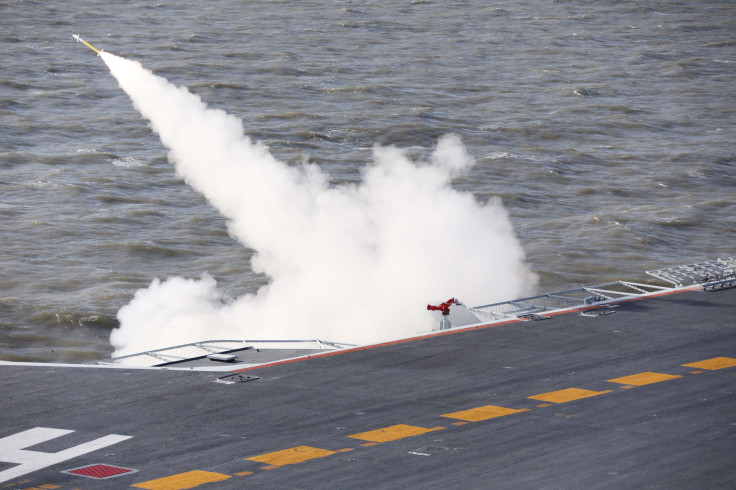China Testing Its New DF-17 Ballistic Missile In Flight

China conducted the first flight-test of a new range of ballistic missiles with a hypersonic glide vehicle (HGV) in November. An anonymous source in the United States government said recent intelligence reports on the People’s Liberation Army Rocket Force (PLARF) stated China conducted two tests of a new kind of ballistic missile named DF-17, according to a report by the Diplomat.
The source added the first test took place Nov. 1 and the second one Nov. 15. The initial test was the first ballistic missile test to have been conducted after the first meeting of the Communist Party of China’s 19th Party Congress was concluded in October.
The first test was done from the Jiuquan Space Launcher Center in Inner Mongolia, located in the north of China. The missile payload traveled a range of approximately 1,400 kms (870 miles) with the HGV flying at an altitude of around 60 kms (37 miles), following the completion of the DF-17 missile’s ballistic and re-entry phases.
The HGV begin powered flight when it separates from the ballistic missile boosters, which follow a normal ballistic trajectory to give the payload vehicle the needed altitude, the source said.
According to the assessments made by U.S. intelligence, the DF-17 is a medium-range system that has a range capacity between 1,800-2,500 kms (1,118-1,553 miles).
The missile is believed to have the capability to deliver both nuclear and conventional payloads and could also be designed to deliver a maneuverable re-entry vehicle instead of an HGV.
The source said the majority portion of the missile’s flight was powered by the HGV when it was in its glide phase. The missile then made a successful impact at a site in the Xinjiang Province, which was just meters away from the actual target. The HGV powered flight lasted 11 minutes.
The HGV payload was designed specially for DF-17, the source added. However, some people in the U.S. intelligence community believed the DF-17 was based on PLARF’s DF-16B short-range ballistic missile, which was deployed earlier.
The source reportedly said, “The missile is explicitly designed for operational HGV implementation and not as a test bed.” This was “the first HGV test in the world using a system intended to be fielded operationally.”
According to present U.S. intelligence assessments, the DF-17 might reach operation capability by 2020.
The Diplomat report said apart from the DF-17 missiles, China conducted the testing of seven experimental glide vehicles between 2014 and 2016. The testing of the DF-17 missile was done after Chinese state media released pictures of the first appearance of a physical hypersonic glider test object in October.
China just showed its hypersonic-BGV in a vid on 08 Oct. Probably a test design model, but AFAIK this is first pics of an actual object 1/ pic.twitter.com/EXIMHkXTEA
— Raymond Wang (@soraywang) November 5, 2017
However, it was not clear whether the pictures of the glider had any connection to the DF-17 missiles, the report said. The released images of the gliders were said to be the first of its kind, according to the Chinese state media.
© Copyright IBTimes 2025. All rights reserved.






















